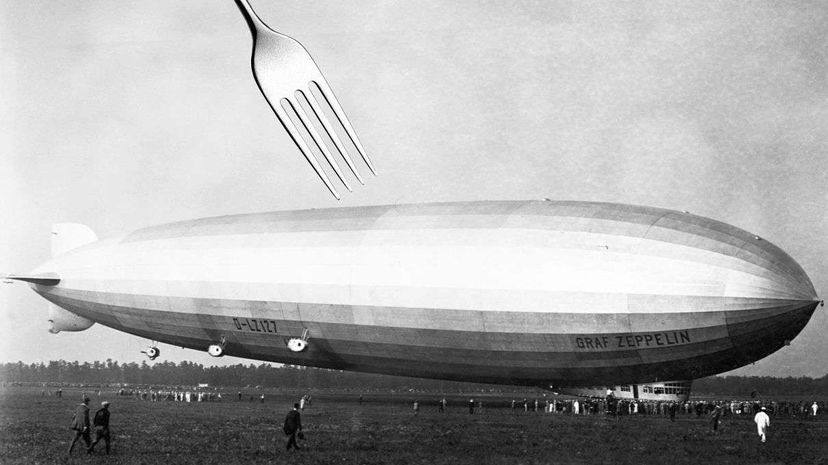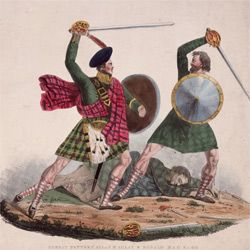
World War I wasn't just ground combat. Submarines surreptitiously navigated underwater, and the skies buzzed with planes from which soldiers fired guns and dropped bombs. Another airborne war machine was developed at this time, too, but has since vanished from contemporary combat: the zeppelin.
Zeppelins were intimidating to behold. These massive, cylindrical balloons were built with metal skeletons and filled with hydrogen to stay aloft. Their skeletons and rudders allowed them to be steered into and out of enemy territory, and they crept along in night skies, their heavy hum announcing the presence of oncoming bomb raids.
Advertisement
Germany was confident that zeppelin-led raids would give them an advantage in the war. This wasn't exactly the case, though. There wasn't much precision in airstrike efforts this early on in military history, and zeppelins were more effective in their fright factor. They were hugely menacing. Where they really helped was in supply and soldier transport. Additionally, their elevated vantage point aided submarine detection and allowed them to act as an overhead bodyguard for troops moving along the ground.
Throughout World War I, Germany's 140 zeppelins were responsible for just 1,500 deaths. You could argue they wreaked more havoc in the kitchen than in the skies. Early zeppelins were constructed internally from rubber, but engineers soon discovered that the most effective material for encasing hydrogen was goldbeater skin. Or guts.
Here's a little more insight into this unique material. Cow's intestines, sourced from butchers in Germany and German-occupied territories like Austria, Poland and northern France, were washed and skinned of their external membranes. Then, they were bathed in an alkaline mixture and stretched to dry. The resulting product was goldbeater's skin, originally used by jewelers to wrap around pieces of gold that were hammered into super-thin gold leaf.
But zeppelin engineers found another use for it. If the skin was moistened again and pieces were patch-worked together into large sheets, they'd dry with airtight seals. No other material — including rubber — could be this tightly sealed. That tight seal was imperative; hydrogen is the most lightweight element and can easily escape containment. The goldbeater skin was worked into a bag shape and filled with hydrogen. Those bags allowed zeppelins to float weightlessly in the sky.
If you're thinking you'd need a ton of guts to make a big enough skin bag to fill a zeppelin, you'd be absolutely right. On average, it took 250,000 cows' intestines to create a single zeppelin. That's why kitchens suffered. Germans are known for their love of sausages, and they were forced to sacrifice this culinary delight for the war effort. The Kaiser's agents monitored butchers to ensure they were handing over all their cow intestines for zeppelin construction, leaving nothing behind to use as sausage casing.
While Germans and those living in German-occupied territories rued their sausage, the opposing forces wracked their brains over how to bring down the airships. In a documentary titled “Attack of the Zeppelins,” University of Cambridge engineer Dr. Hugh Hunt explains that there's not much surviving information on how zeppelins were constructed — or how they were deconstructed, i.e., shot down. It wasn't exactly like popping a balloon. A bullet could produce a hole in the zeppelin, but that didn't sink the ship. Toward the end of the war, the British devised a method of spraying the zeppelins with bullets, then firing phosphorus-containing incendiary bullets that, in contact with the hydrogen within, created an explosion.
The hearth suffers as much as the home front in wartime, but why deprive countrymen of their sausage? Why single out cow intestines for zeppelin construction?
Taylor Hudnall, an Alexandria, Virginia-based butcher and chef, explains that cow's guts are bigger than other animals' intestines. A standard sausage sold in a northern Virginia butcher shops measures 1.5 inches (3.81 centimeters) in diameter and is encased by pig intestines, which are truer to that dimension. Hudnall explains that butchers prepare intestines for use by cleaning them of debris and packing them in salt water or in dry salt. Before they're wrapped around seasoned, ground sausage, they must be flushed with cold, clear water.
Could you make sausages without casings? Sure, Hudnall says. “It would just be ground meat, like you see in the grocery store in tubes — breakfast sausage that you form into patties yourself.”
The benefit of the casing is packaging and, arguably, taste.
“I like the snap of casing. Before I even knew what I was biting into, I liked the texture,” Hudnall says. He asserts that there's virtually no flavor in the casings made from intestines, but some casings made from animal bladders (primarily porcine) have a faint taste of uric acid. Of course, many of his customers skin the casing off sausage before adding it to sauces and other dishes.
As butchery practice, “casing is a good way to use up a wasted part,” Hudnall says. “Anytime you're using organs, you're doing the animal a good service. There's less waste.” Are there other uses for intestines? “Well,” Hudnall says, “they're hermetically sealed containers and make good water balloons.”
That was precisely the logic that influenced zeppelin construction.
Do you love history as much as we do? Then be sure to check back in to HowStuffWorks Now every week. We'll be publishing a new (old) ridiculous history article every Monday.
Advertisement

